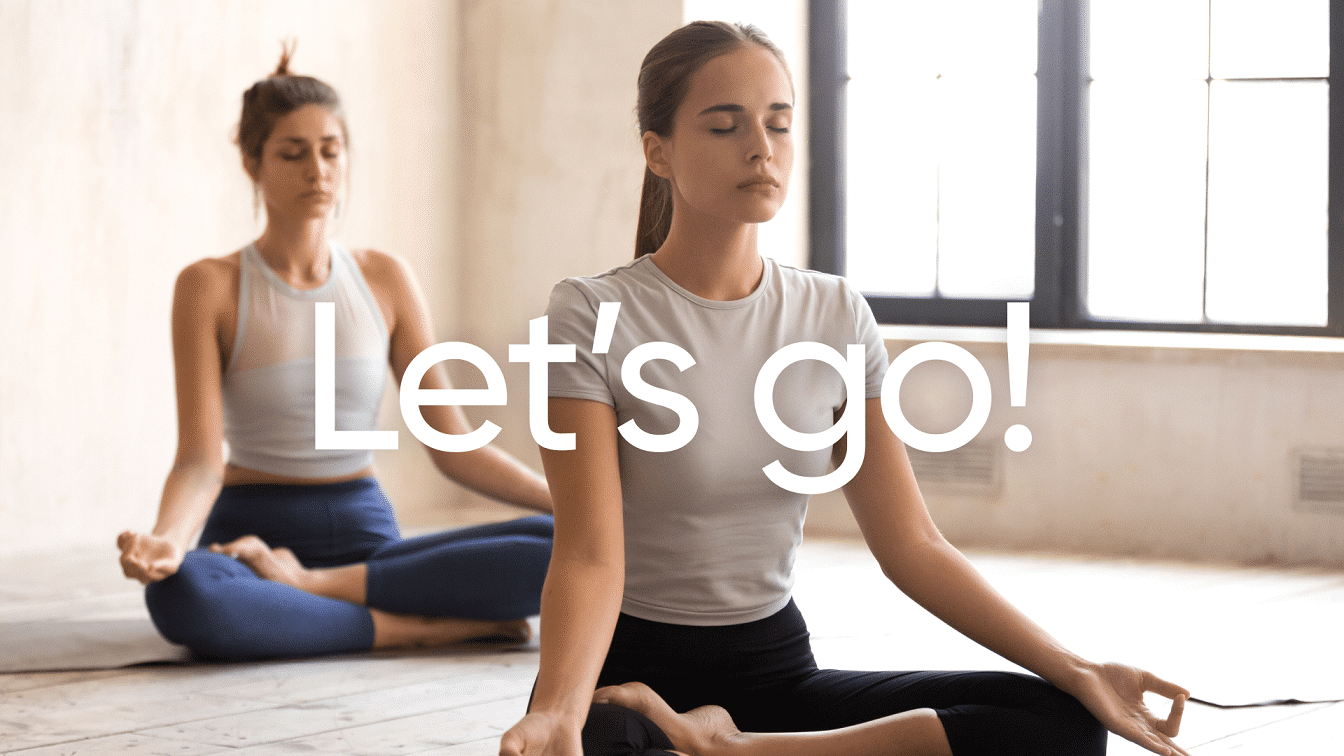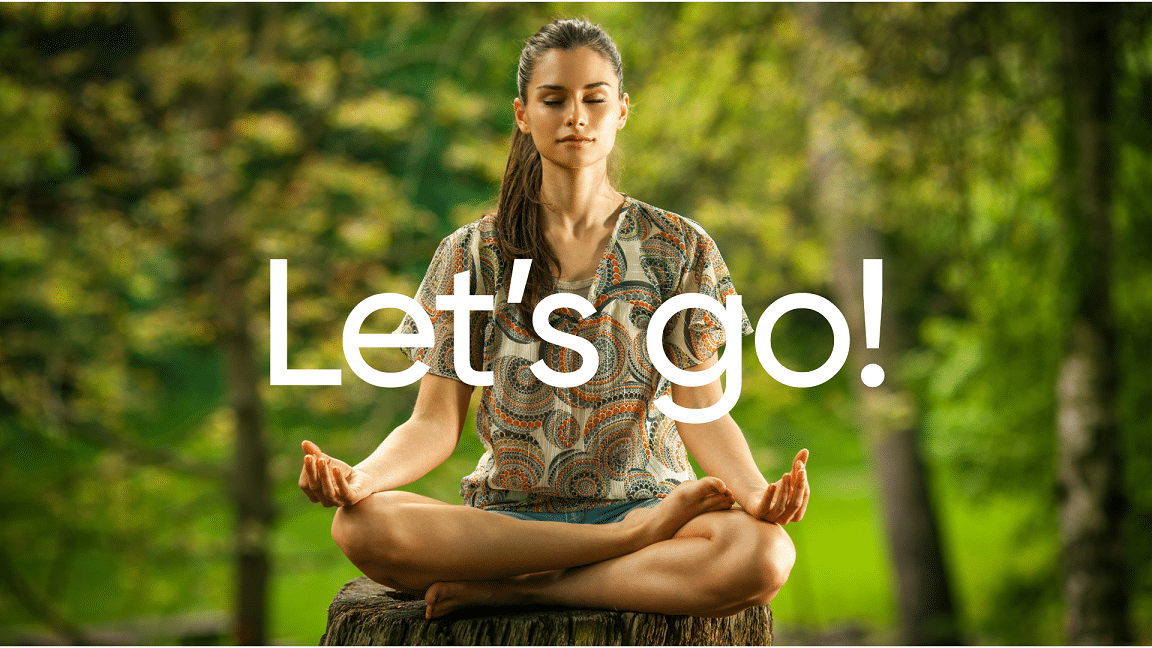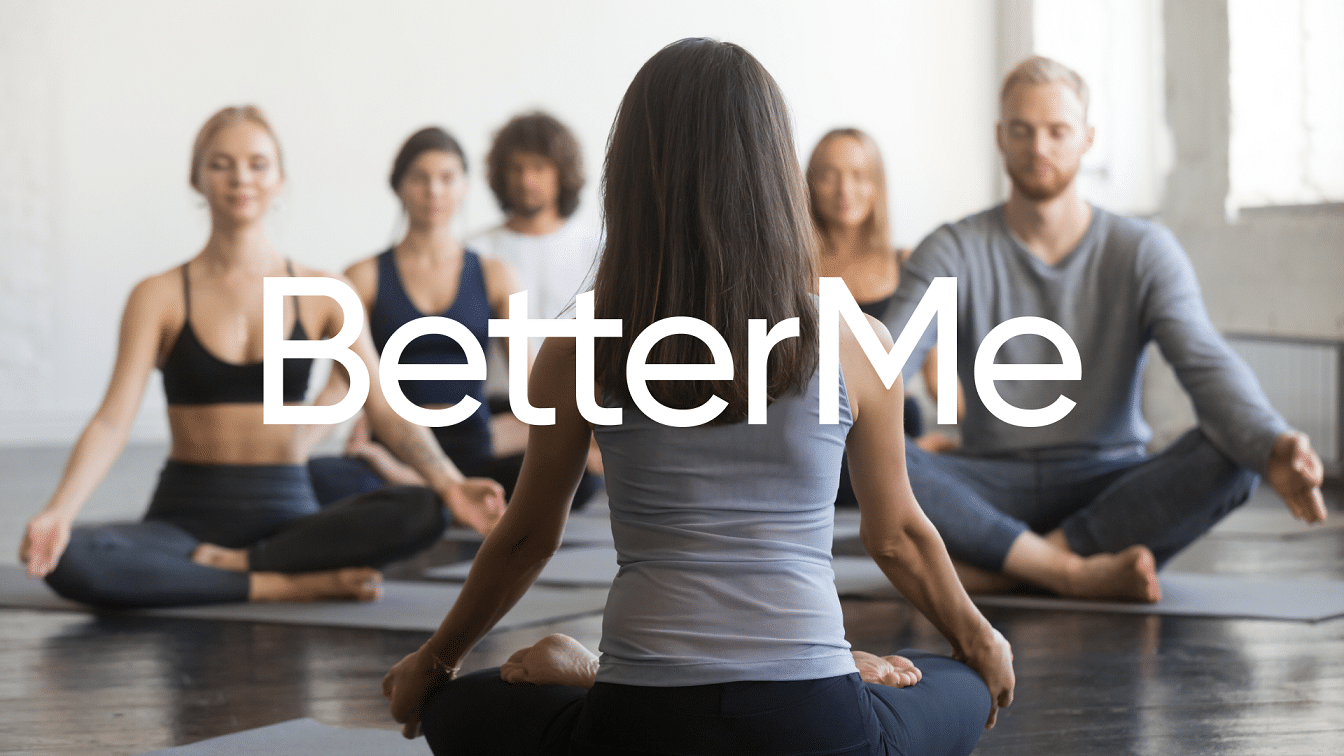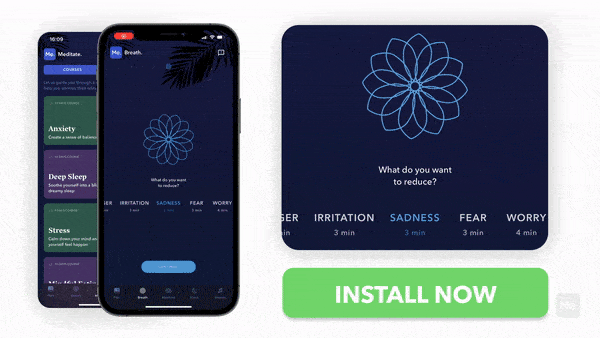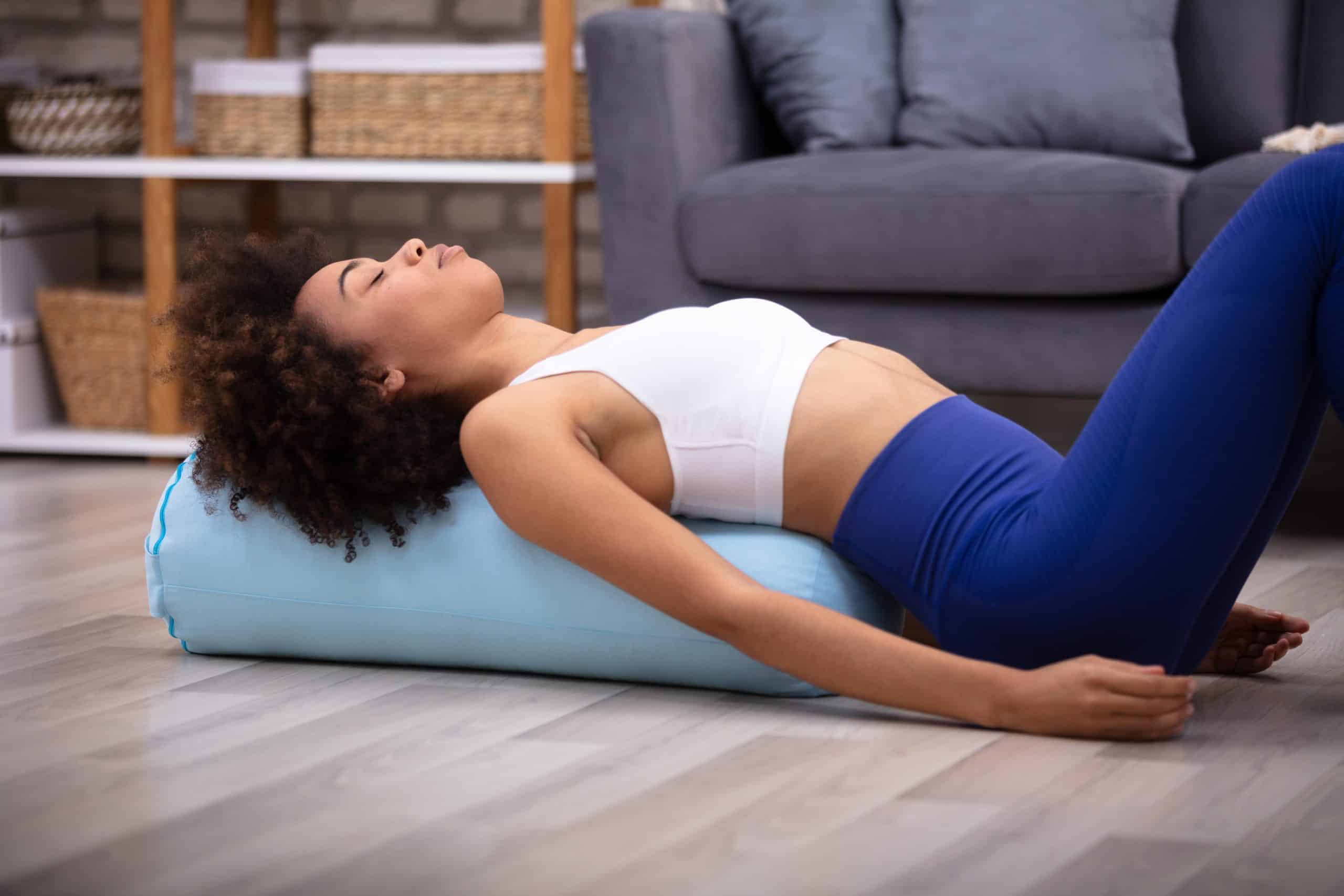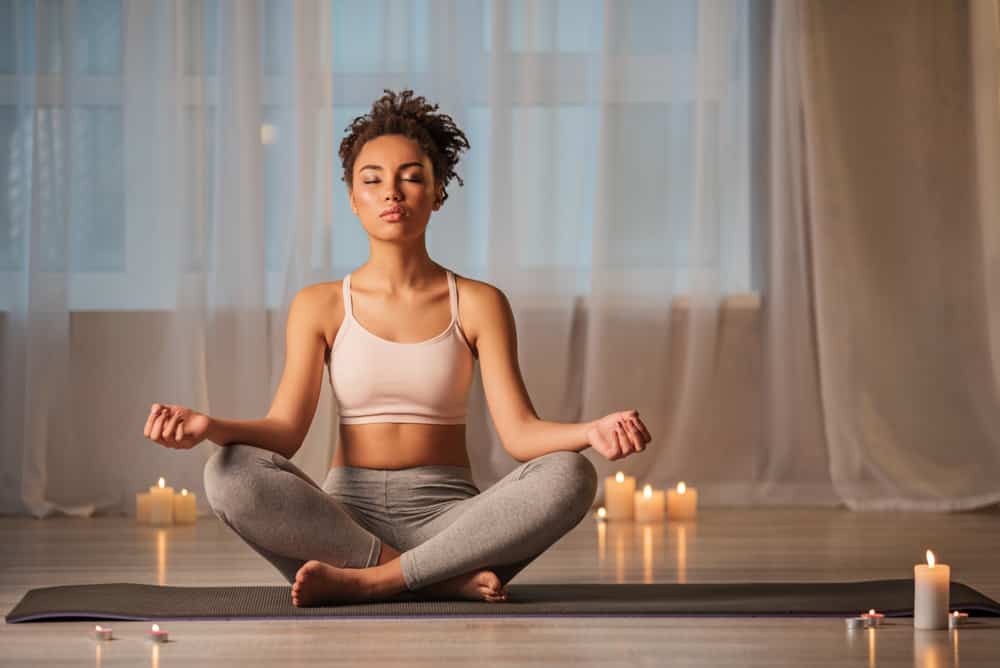What Is Visualization Meditation?
Are you curious about the practice of visualization meditation? Are you wondering whether this practice could help improve your sleep, life, general well-being, and even help you attain your goals? Read on to find out!
This is an exercise that combines both meditation and visualization. Based on the calm reflection of life, it enables you to picture an experience before you have lived it in real life. Those who practice it encourage you to only visualize positive and calming experiences in life.
Visualization Meditation: Buddhism
The practice of visualization meditation was developed in India (and other neighboring countries) and is practiced in Vajrayana, aka Tantric Buddhism (11). In Tantric Buddhism, followers of this religion are often advised to visualize themselves as buddhas and bodhisattvas. It also includes visualizations of the interior of the body in order to manipulate the energies of the body and mind (12).
What Is The Point Of Visualization Meditation?
This practice is often used to help direct your mind to a specific goal that you would love to achieve. This mental exercise can help you reach your goal even faster than those who do not practice it.
Some benefits of visualization meditation include (13):
- Improved athletic performance
- Increased focus and mental clarity
- Decreased levels of stress and anxiety
- A boost in self-confidence
- Pain relief
- Better stress management
- Improved sleep
- Better immunity
Whether you want to learn how to exit the spiral of self-harming behavior, overcome anxiety, cure insomnia or simply give yourself the time and space to bliss out and soak up the moment of complete peace and quiet – BetterMe: Meditation & Sleep app is exactly the tool for that! If you don’t take care of number one, who will?
How To Practice Visualization Meditation?
There is no wrong or right way to do this. You can choose to let your imagination take over as you sit back and enjoy the ride. If this does not sound like a good option for you, then choose to follow some visualization meditation techniques to help you practice better.
Here are some meditation visualization techniques for you to choose from (2):
-
Color Breathing
This method requires you to associate a color (any color) with a positive emotion or soothing vibe.
- Start by seating in a comfortable position, with your eyes closed.
- Focus on your breath and visualize a color that you like.
- Think about this specific color and the positive feelings that you associate it with.
- Imagine the feeling that you get from it, feeling your body from your crown to your toes.
- Imagine any unwanted emotions draining out of your body with each exhale and replace them with your chosen color with each inhale.
-
Compassion Meditation
Also known as loving-kindness meditation, it helps you develop feelings of compassion and kindness toward yourself and others.
- Start by seating in a comfortable position and with your eyes closed.
- Focus on your breath and visualize yourself or someone else in your life.
- Take a moment to remind yourself about your feelings towards the person in your mind. Whether the feelings are of love, indifference, or hate, allow yourself to feel them without judgment.
- Imagine challenges or pain they are or might be facing in their life.
- Focus on positive feelings of peace, calm, joy, healing, or happiness, and picture light from your heart to theirs, sending these positive feelings to them.
- Sometimes repeating a mantra stating that you are sending them (or yourself) these feelings could help you concentrate.
- If you are directing the visualization toward yourself, imagine the pain and other difficult feelings easing with each exhale as the golden light travels through your own body.
-
Progressive Muscle Relaxation
This exercise helps ease stiff or tight muscles that may be caused by stress or feelings of anxiety.
- Start by lying down on a firm but comfortable surface, close your eyes and focus on your breathing
- Do a ‘body scan’ and take note of the muscles that are not tensed or in pain.
- Once you have separated the okay muscles from the ones troubling you, pick a muscle group, inhale and hold these muscles tight.
- Hold your breath and these muscles for five seconds, then slowly release both of them as you visualize the tension and pain leaving your body.
- Continue focusing on your breathing and rest for about ten seconds before moving on to the next group of tensed muscles.
-
Goal Visualization
This method helps trick your brain into believing that a certain positive goal in life has already been achieved. This specific method is used to help boost or foster optimism, hope, and other positive feelings of achieving a certain set goal in life.
- Start by seating in a comfortable position and with your eyes closed.
- Focus on your breath and visualize a specific life goal in your mind. It could be getting a promotion at work, lifting heavier weights at the gym, learning a new skill, etc.
- Imagine yourself finally succeeding at this goal. Visualize the location, feelings that will be coursing through your body, and the people around you who are happy for you.
- Have a positive mantra that tells you that you can achieve this goal and that you have the strength to achieve it.
- Focus on your breathing and your mantra as you visualize the scene of your success.
-
Guided Imagery
This requires you to visualize positive scenes and images in your head. This helps you relax, cope with stress or fear, and feel more at peace within yourself. This method is commonly used in sleep visualization meditation. Guided imagery and guided visualization almost work in the same way.
Read More: How To Lead A Guided Meditation: Put All Those Buzzing Thoughts On Hold And Let Yourself Breathe
Sleep Visualization Meditation
According to the American Sleep Association, around 30% of adults have short-term problems with insomnia, and about 10% have chronic difficulties with falling and/or staying asleep (9). According to this organization and the Sleep Foundation, adults are recommended to get 7 to 9 hours of sleep each night to help them function at their best (4). However, despite this, around a third of adults are reported to typically get less than 7 hours of sleep per night (1).
This lack of sleep is often caused by anxiety, stress, depression, biological reasons, lifestyle choices, or even technology, such as watching tv, using cell phones, playing video games, or using computers right before bed (7). With insomnia and other sleep problems becoming quite rampant, techniques, such as sleep visual meditation, come in handy to help people fall asleep faster.
This practice is recommended because it expands your ability to focus on calming and restful images, instead of dwelling on anxious, fearful thoughts (10) that can cause insomnia and keep you from sleeping soundly and deeply.
A Simple Sleep Visualization Meditation Technique:
- Imagine yourself in a place where you once felt the most peaceful and relaxed.
This could be while walking in an expansive field of flowers, sitting by the ocean watching and listening to the waves, lying outside watching the stars and listening to crickets chirping, etc.
- Once your mind is here, notice as many sensory details as you can. What time of the day is it? Are you cold and freezing or warm and cozy? What sounds are there? If you are in an ocean, are the waves crashing, and what does the sky look like? If you are watching the stars, how bright are they? Can you feel the grass under your feet? Is a campfire cracking nearby?
Visualize this peaceful place for a few minutes before going to bed or while in bed, and it will help you fall asleep faster. If you happen to wake up in the middle of the night, repeat the process. Visualization meditation and other forms of sleep meditation (7) increase your quality of sleep, which in turn leads to (3):
- Lower levels of stress
- Improved mental clarity and memory
- Better eating habits
- Increased productivity and athletic performance
- Lower risk of heart diseases, stroke, and type 2 diabetes
- Improved immune function
Read More: Chakra Colors And Meanings: A Handy Guide On The Ins And Outs Of Your Body’s Energy Centers
How To Perform Letting Go Meditation Guided Visualization?
Life is not always smooth, and as we all go through it, we get to experience many highs and lows. While we would love only the great experiences to stay with us, sometimes the feelings of heartache and emotional pain can stay with us as well, leading to unhappiness. Letting go does not just have to be about the pain caused by someone; bad habits are also something that many of us find rather hard to surrender. They can also keep us from prospering in life and achieving our goals.
If you are looking for a way to leave the past behind and achieve a better future, then attempting a “letting go meditation guided visualization” routine could help break you out of heartache or self-destructive habits.
Here is a simple letting go guided visualization meditation routine for you to try (6):
- Select appropriate time – While meditation can be done at any time of the day, it is best that you select a specific time of day where you are sure you will not be disturbed. The best times for this are generally early in the morning or late at night before you head to sleep.
- Pick a place – For you to fully immerse yourself in your guided creative visualization meditation, select a location that is quiet and free of distractions. This could be your bedroom, the balcony or a quiet place in the park (if you choose to do this outdoors).
- Clothing – While you can meditate in any kind of clothing, people who often meditate opt for loose fitting clothes. Sometimes clothes that are too tight could cause tingling and numbness in your limbs, meaning that these parts have “gone to sleep.” Good clothing options include flowing robes, yoga pants, loose fitting sweatsuits, etc.
- Position – Choose a position that is the most comfortable for you. You may choose to either, lie down on the floor, on your back, sit upright in a chair, with your legs uncrossed and hands resting on your thighs, or to sit on the floor in a crossed-legged position, with left hand resting palm up on your lap and right hand resting palm up in your left hand.
- Once you are comfortable, close your eyes and focus on your breathing. Breath in slowly through your nose and exhale slowly through your mouth. Notice how your body expands with each inhale and how it contracts with every exhale. Take note of how your muscles begin to relax as well.
- Visualize your perfect scene from nature. Imagine a bright sunny day, not too hot, with blue skies, with some fluffy clouds leisurely soaring above, and a gentle breeze rusting the leaves of the trees.
- Now imagine that your body, your breath, your emotions, and your mind are an extension of nature. You could imagine yourself as a part of nature, such as a beautiful jacaranda tree with its breathtaking and picturesque blooms of vibrant purple flowers. If this does not work for you, visualize yourself sitting in nature, under the shade of a tall tree enjoying the cooling breeze and watching the clouds as they go by.
- Start to dream of who you would be if all the pain you are experiencing or all the bad habits you keep going back to were not a part of your life. What kind of person would you be? What activities would you be unafraid to try? What lifestyle would the future you who is free from all his/her burdens be living? What would your everyday look like?
- Once this picture is clear in your mind, look inward and take not of all the things that are preventing you from reaching this goal. Are you still stuck on an ex lover? Are you stuck in a career that is dragging you down? Are you unhappy and insecure about your weight and fitness? Is family the reason for your stress?
- Go back to the previous image of what your life would be like if all these factors/baggage were not weighing you down. Take a closer look at how different your life would be if all these stresses were not a part of you. Create an internal representation – either a visual image, a feeling, or a sound – that relates to how you, your life, and your surroundings could be different.
- As you bask in the glorious image of what your life could be, ask yourself what you need to do right now that will eventually push you to the life that you crave. Should you exercise more and work on better eating habits? Maybe you should unfriend and block your ex and go out on more dates, or just hang out with friends? Do you need to cut off the toxic friends or even family members from your life? Should you start looking into a career change? Maybe follow that passion and turn it into a career instead?
- Now, ask the following questions “What action steps do I need to take to feel inspired and motivated to charge powerfully forward? What emotions, beliefs, or behaviors do I need to let go of so that I can stop being a victim and become the person I am meant to be?” Ask you are asking this, listen to your heart rather than your mind to help you understand the answers to these questions and how to better your life.
- Once you have your answers, take a few slow, deep breaths and open your eyes. Take out your journal or notebook and make notes about whatever came up for you during the guided meditation. Write down:
- How you want to be living your life in the best version of your future
- What needs to be cleared out or pruned – This could be people, behaviours, or just junk in the house that is making you hold on to a past self.
- What qualities or characteristics you need to embrace to become the best version of yourself.
- What specific action steps you need to take to achieve this. Be sure to include something you can do today.
Go do that thing and continue taking these steps everyday until you achieve your goals and get away from all the toxicity in your life.
Why Does Visualization Work In Meditation?
Research using brain imagery suggests that visualization works because when we imagine things, neurons in our brains interpret the imagery as equivalent to a real-life action. They create a neural pathway that prepares our body to act in a way consistent to what we imagined (5).
In simpler terms, ‘seeing is believing’ (8). Whatever you train your mind to believe becomes your reality, and the more you do it, the more your real life starts to change and emulate what your mind envisions.
Visualization has and is often used by popular celebrities to help them prepare and even win in their respective sports. While engaging all their senses, these athletes use vivid, highly detailed internal images and run-throughs of the entire performance, as well as their knowledge of the sports venue to help them win.
Visualization meditation can enhance motivation, increase your confidence and self-efficacy, improve motor performance, and prime your brain for success (8). You can basically start the journey to living your best life from the comfort of your chair or meditation pillow!
With stress being a constant presence in our lives, taking time to process emotions, decompress and get into the right frame of mind is absolutely crucial. With BetterMe: Meditation & Sleep app your mental health is in good hands! Start using it now!
How To Improve Meditation Visualization?
Like with everything else in life, creative visualization meditation can be hard to master, especially as a beginner. Here are some tips to help you master, and eventually become a master at this
1. Always Keep Your Eyes Closed
It is much easier to visualize with your eyes closed as it keeps you from being distracted by things around, or those going on around you.
2. Focus On The Positive
When trying to picture a better life, many people tend to find themselves focusing on the bad first, instead of the good. Visualize your life how you want is not how it currently is. While the present may be bad, the future in your mind can be as glorious and fulfilling as you want it to be. Pay attention to that.
3. Go Easy On Yourself
People who have been meditating for long are able to stay focused in their visualization and can conjure up vivid images pretty quickly. As a beginner, you will more often than not, find yourself losing focus and even not being able to conjure up any images. Those who can picture something, many find that the images are blurry and not as clear and vivid as they would like. Instead of feeling frustrated, keep practicing and eventually your focus and imagination will improve.
4. Be Specific
Do not just think about a promotion, specify the position that the promotion will be, the corner office as well as the salary bump that will come with it. Instead of thinking about weight loss in general, specify the exact weight you would like to be once you step on the scale. Your goals should not be vague but very specific to the very minute detail.
DISCLAIMER:
This article is intended for general informational purposes only and does not address individual circumstances. It is not a substitute for professional advice or help and should not be relied on to make decisions of any kind. A licensed physician should be consulted for diagnosis and treatment of any medical conditions. Any action you take upon the information presented in this article is strictly at your own risk and responsibility!
SOURCES:
- 1 in 3 adults don’t get enough sleep (2016, cdc.gov)
- 5 Visualization Techniques to Add to Your Meditation Practice (2020, healthline.com)
- 10 Reasons Why Good Sleep Is Important (2020, healthline.com)
- How Much Sleep Do We Really Need? (2020, sleepfoundation.org)
- How to Use Visualization to Achieve Your Goals (2011, huffpost.com)
- Letting Go: A Guided Meditation for Fall (2016, chopra.com)
- Meditation for sleep (n.d., headspace.com)
- Seeing Is Believing: The Power of Visualization (2009, psychologytoday.com)
- Sleep and Sleep Disorder Statistics (n.d., sleepassociation.org)
- Using visualization to relax and sleep better (n.d., unr.edu)
- Vajrayana (n.d., britannica.com)
- Vision and Visualization (2017, oxfordbibliographies.com)
- Visualization meditation (n.d., headspace.com)






